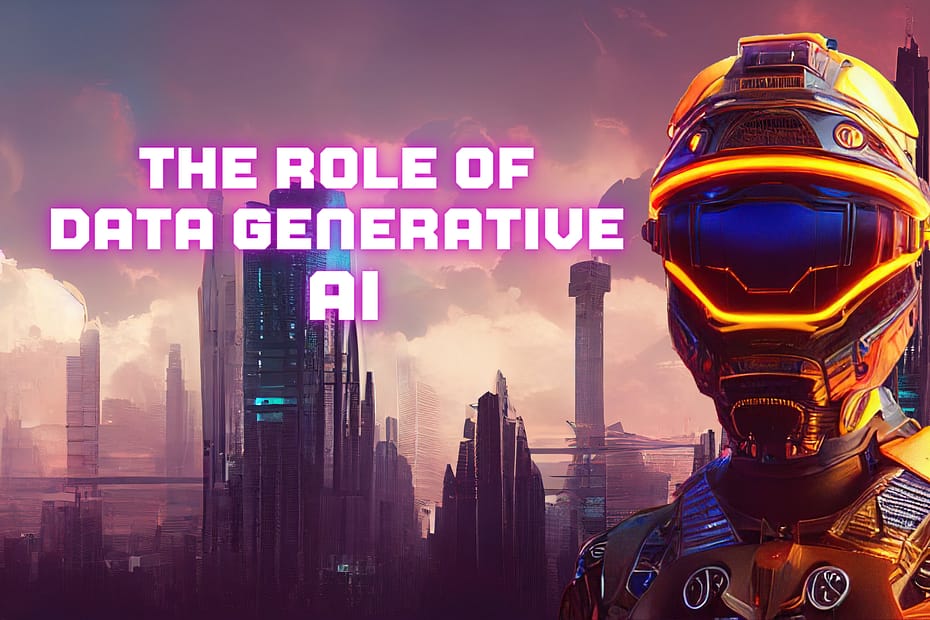Last Updated on: 9th September 2023, 09:26 am
In the ever-evolving landscape of artificial intelligence, Generative AI stands as a powerful force, reshaping the way we create content, analyze data, and make informed decisions. In
We will delve into the world of Generative AI, exploring its mechanisms, applications, benefits, and challenges. Moreover, we will examine its pivotal role in data-driven decision-making for businesses, as it unlocks new dimensions of insight and innovation.
Table of Contents:
- Understanding Generative AI
- What is Generative AI?
- How Does Generative AI Work?
- The Building Blocks of Generative AI Models
- Diffusion Models
- Variational Autoencoders (VAEs)
- Generative Adversarial Networks (GANs)
- Transformer Networks
- Applications of Generative AI
- Language Generation
- Audio Generation
- Visual Generation
- Synthetic Data Generation
- Real-world Applications
- Challenges in the World of Generative AI
- Computational Scale
- Sampling Speed
- Data Quality
- Data Licensing
- Benefits of Generative AI
- Generative AI’s Role in Data-Driven Decision Making for Businesses
Understanding Generative AI
What is Generative AI?
Generative AI is a paradigm-shifting technology that empowers users to rapidly create new content across various modalities, including text, images, sounds, animation, 3D models, and more.
It harnesses the potential of neural networks to identify intricate patterns and structures within existing data, thereby enabling the generation of original and innovative content.
How Does Generative AI Work?
Generative AI models utilize neural networks to recognize patterns and structures within existing data, allowing them to generate entirely new and unique content.
A significant advancement in generative AI is the adoption of diverse learning approaches, including unsupervised and semi-supervised learning.
This flexibility enables organizations to leverage vast amounts of unlabeled data to create foundational models that serve as the basis for AI systems capable of performing diverse tasks.
The Building Blocks of Generative AI Models
1. Diffusion Models
Diffusion models, also known as denoising diffusion probabilistic models (DDPMs), employ a two-step process during training.
This process involves forward diffusion, where random noise is gradually added to training data, and reverse diffusion, where the noise is reversed to reconstruct data samples.
Diffusion models excel in producing high-quality outputs, making them a cornerstone in generative AI.
2. Variational Autoencoders (VAEs)
VAEs consist of two neural networks: an encoder and a decoder. The encoder transforms input data into a compact, dense representation, preserving essential information for the decoder to reconstruct the original data.
VAEs are known for their efficiency and speed in generating outputs, although they may lack the level of detail achieved by diffusion models.
3. Generative Adversarial Networks (GANs)
GANs, introduced in 2014, engage two neural networks: a generator and a discriminator. These networks engage in continual competition, with the generator producing content and the discriminator striving to distinguish real from generated content.
GANs have been widely used but are better suited for domain-specific data generation due to limited sample diversity.
4. Transformer Networks
Transformers process sequential input data non-sequentially, making them highly adaptable for text-based generative AI applications.
Self-attention and positional encodings are key mechanisms within transformers that enable the understanding of word relationships and context over extended sequences.
Applications of Generative AI
Generative AI transcends boundaries and offers a plethora of applications, including:
- Language Generation: Generating essays, code, translation, and understanding genetic sequences.
- Audio Generation: Composing music, creating audio snippets, recognizing objects in videos, and generating accompanying audio.
- Visual Generation: Crafting 3D images, avatars, videos, graphs, illustrations, and editing or enhancing images.
- Synthetic Data Generation: Producing labeled and unlabeled data for AI model training, overcoming data challenges.
- Real-world Applications: Revolutionizing industries such as automotive, healthcare, weather forecasting, and entertainment.
Challenges in the World of Generative AI
- Computational Scale: Training generative AI models with billions of parameters demands significant computational resources.
- Sampling Speed: Some models, like diffusion models, may suffer from latency in generating instances, affecting interactive applications.
- Data Quality: Generative models thrive on high-quality, unbiased data, and some domains may lack sufficient data for training.
- Data Licensing: Acquiring commercial licenses for existing datasets or creating bespoke datasets can pose challenges.
Benefits of Generative AI
Generative AI boasts several key benefits:
- Creation of indistinguishable content from that generated by humans.
- Improved efficiency and accuracy of AI systems.
- Novel insights through complex data analysis.
- Automation and acceleration of various tasks and processes.
Generative AI’s Role in Data-Driven Decision Making for Businesses:
Generative AI is instrumental in the realm of data-driven decision-making for businesses. It unlocks the following capabilities:
- Enhanced Data Analysis: Rapidly processes vast datasets to extract meaningful insights and patterns, facilitating informed decisions.
- Predictive Modeling: Utilizes historical data to predict future trends, customer preferences, and market shifts.
- Automated Decision-Making: Develops real-time decision-making algorithms, reducing human errors and streamlining operations.
- Personalized Customer Experiences: Understands individual customer preferences, leading to tailored products, services, and marketing strategies.
- Resource Allocation Optimization: Analyzes resource utilization, recommending efficient allocation for optimized budgets and investments.
- Risk Assessment & Mitigation: Identifies risk factors, aiding in risk assessment and mitigation strategies.
- Innovation & Creativity: Generates ideas, designs, and solutions, fostering innovation across products, services, and marketing campaigns.
Generative AI is a transformative force that transcends traditional boundaries, opening new horizons across industries.
Its role in data-driven decision-making for businesses is pivotal, as it empowers organizations to harness data, gain unique insights, automate processes, and foster innovation.



